Minimalism in games is something that I absolutely love. The whole “bright colors on a dark background.” Making the most out of very little is an incredible thing that I like to use in my own art. The story of the creation of Super Mario has always stuck with me; giving him overalls and a moustache to make the individual sections of his body stand out in order to make him look more like a human, and not be a plain red or blue shape chasing after Donkey Kong. As an adult, this sort of minimalism is why I’m such a fan of old Taito arcade games, the MSX1, and came around to liking the ZX Spectrum.
Dotstream on the Game Boy Advance is the game that made me fall in love with this style. Not that I didn’t like this art style in games before or anything; I definitely remember this strange, warm feeling I would get loading up these lo-fi arcade games in MAME that were lucky to have eight colors in their palette and required a lot of imagination when looking at the character sprites. Dotstream just feels different. I should probably explain what Dotstream is first before I get back into its art.
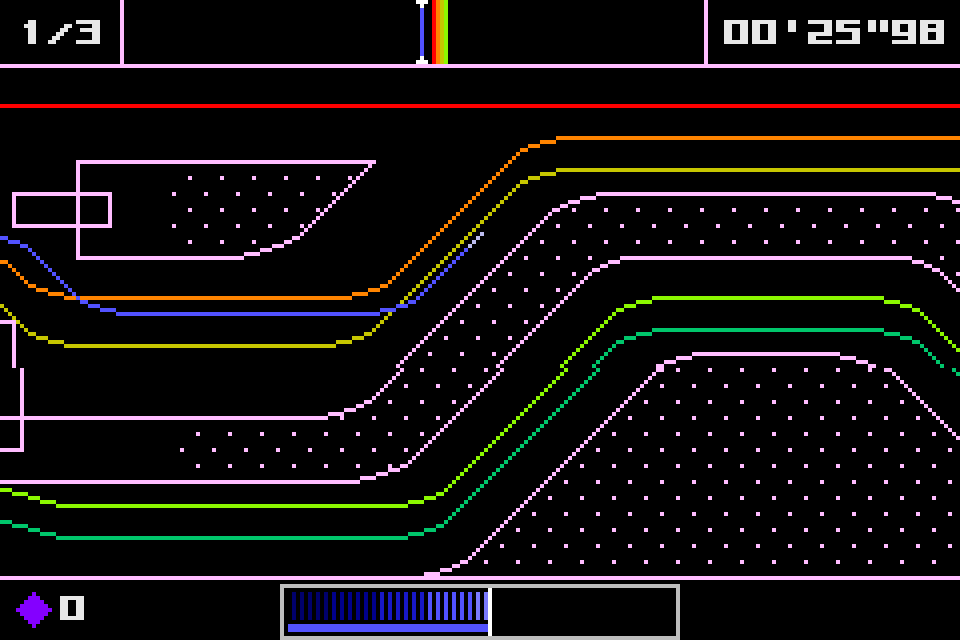
Dotstream is one of the games that are part of the Bit Generations series, along with games like Orbital. It’s a horizontally scrolling racing game where instead of a car, you are one of many different colored lines of pixels. Think of the light cycles from Tron, but they have more freedom of movement than 90 degrees and you don’t explode if you crash. However, instead of the normal acceleration and braking that comes from a racing game, your main form of acceleration is done through slipstreaming the other lines on the track, hence the name Dotstream. There’s a brake, but I have never actually used it in all the years I’ve been loading this game up on the GBA. You spend each race not just trying to get in first place, but avoiding the walls and moving obstacles so as not to crash, since that takes away from a limited resource you have (represented by flashing diamonds), which can also be used to give yourself a short speed boost. This is the risk/reward part of the game; you could use your boosts and get an early lead, but then risk immediately losing a race if you crash. You don’t get to retry a race either, if you fail, you immediately retire with zero points and go on to the next race. It is also possible to get new diamonds by entering the pit lane at the starting line, but you of course are stuck in place while getting these diamonds and don’t have the luxury of more than two or three laps to catch up to anyone that passes you. These are all short races where you are meant to memorize the tracks and manage yourself and your resources accordingly. It’s a pretty short game (I mean, it’s on a handheld), and it gets very difficult towards the end, but it rules and is really fun to play.
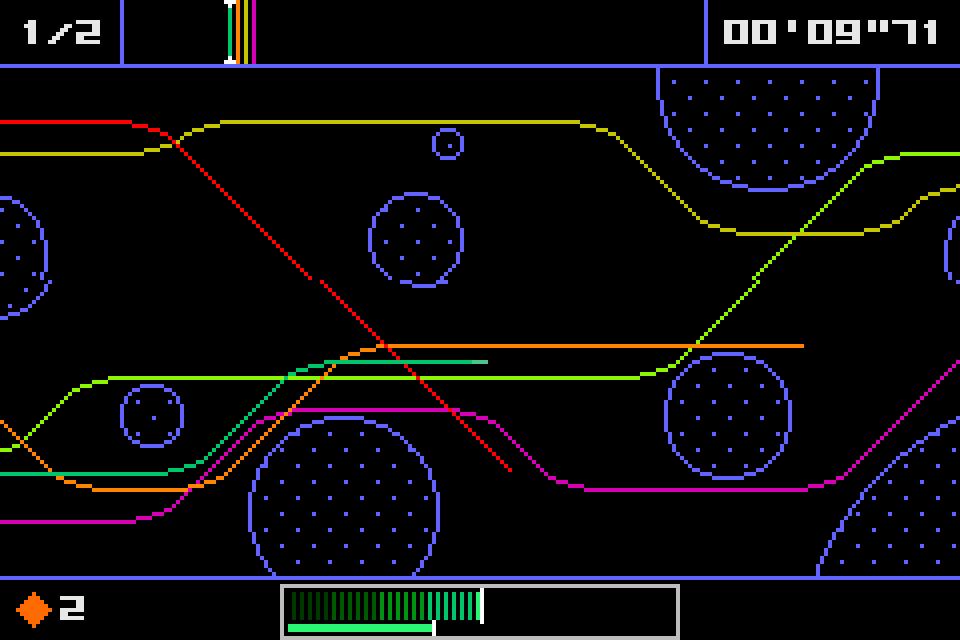
But I want to get back to the minimalism. I cannot get enough of the minimalism. The rainbow palette on a black background pleases my eyes and brain when I look at it. This spacy, neon “what we thought the computers would be like in the future back in the 80s” aesthetic is a thing of beauty and has been a tremendous influence in my own “keep it simple, stupid” work. The kind of thing you stare at in a dark room late at night until your brain forces you to close your eyes and sway your head in time with a vibration created by your subconscious. It is a great example of using little to get a lot. Let me explain. See, for as much as I love the GBA, I can’t deny that a good 95% of the games on it didn’t have the worst, ugliest, most dog shit pre-rendered graphics. Even Nintendo of Japan wasn’t immune to this. I don’t know if there was something going around at the time that incapacitated seemingly everyone in games that knew how to draw, but whatever it was really sucked and led to a lot of really fucking ugly games to drag down the handheld. The thing about Dotstream is that it is literally all dots and lines, not a polygon or even a sprite in sight. Because of that, it has aged better on a visual level than all these games that were supposed to be on the cutting edge of handheld hardware. The beauty lies in the simplicity. There was the other 5% of the GBA’s library that used self-imposed limitations in their art as well (Wario Ware being a popular example) that will stand the test of time.
I should point out that the minimalism does not apply to Dotstream’s music. It is an unbelievably aggressive soundtrack, ranging from 16-bit Drum and Bass, to something that may as well have come from a demoscene intro; the kind of track that lets you know that you are about to pirate the worst British microcomputer game of 1991. Given the scratchy, dirty soundchip that the GBA had, you could not have picked better genres to use.
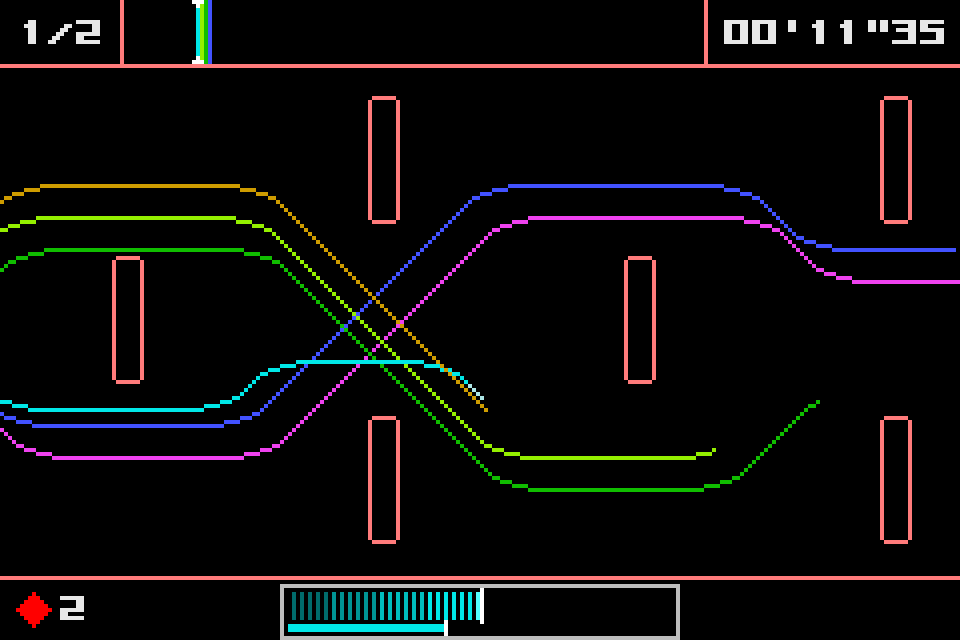
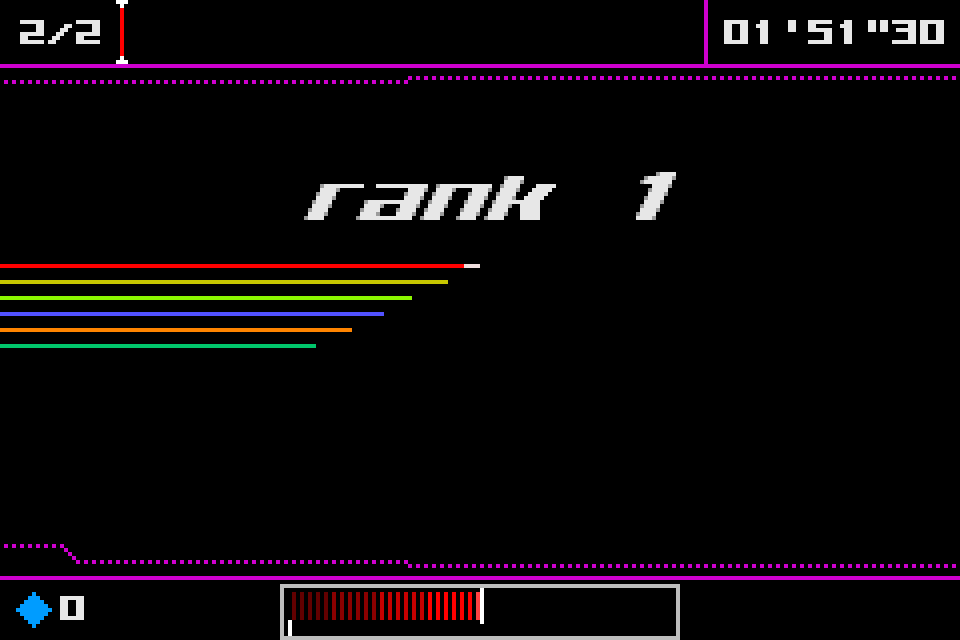
In all the years I’ve been playing the Bit Generations games, I never actually realized that Skip Ltd. developed all but one of them (Q-Games (of PixelJunk fame) did Digidrive)). For those who don’t know, Skip Ltd. are the developers responsible for the amazing, generational Chibi-Robo on the Gamecube. Chibi-Robo, a game that would be my favorite on the GC if Pikmin didn’t exist. Also a game that really helped set that experimental vibe that games on Nintendo systems were going through at the time. Again, this is an era that I look back at fondly, all these games on the most literally named systems (the Gamecube and the Game Boy Advance) that were willing to not play it safe and experiment with either mechanics, art aesthetics, or both. Shout out Skip Ltd and this era of Nintendo, we were foolish to ever think game graphical standards couldn’t or shouldn’t have peaked with the Gamecube.
Anyways. Dotstream is the first thing that comes to mind when I think of the Game Boy Advance. I associate my love for that system with this game, even before I think of Astro Boy (though Astro Boy is still my favorite game on the system), or Orbital, or Mother 3, or Wario Land 4, or Aria of Sorrow, or Pokemon, or Shining Soul, or anything else. Dotstream is an incredible game for the short amount of time you’ll play it. Try doing what I said earlier: play it at night when it’s cold in your home, in a room illuminated only by your GBA screen or computer monitor, and let it take you.
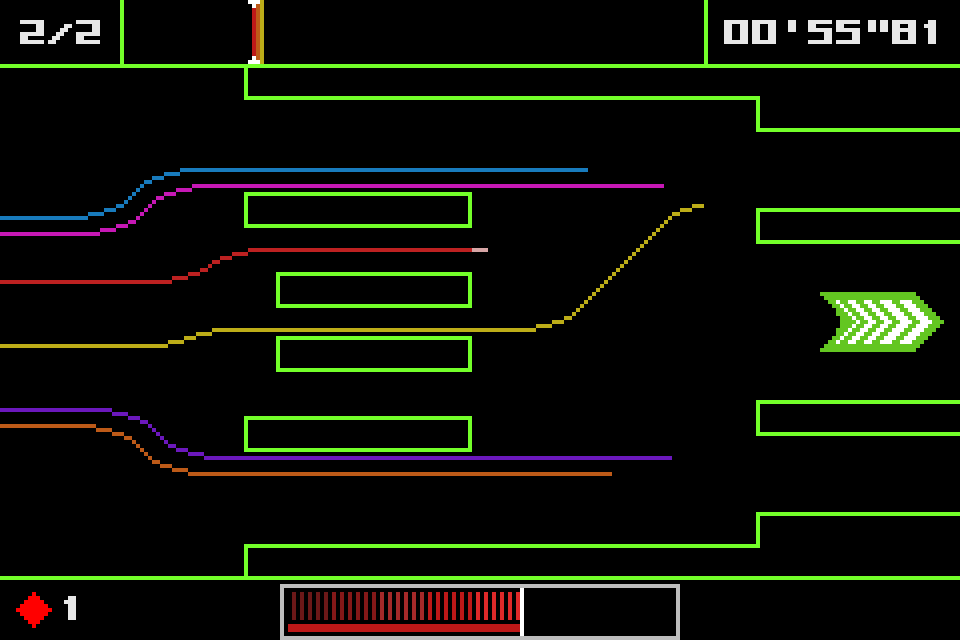


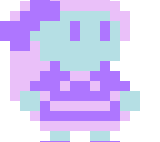
Comments